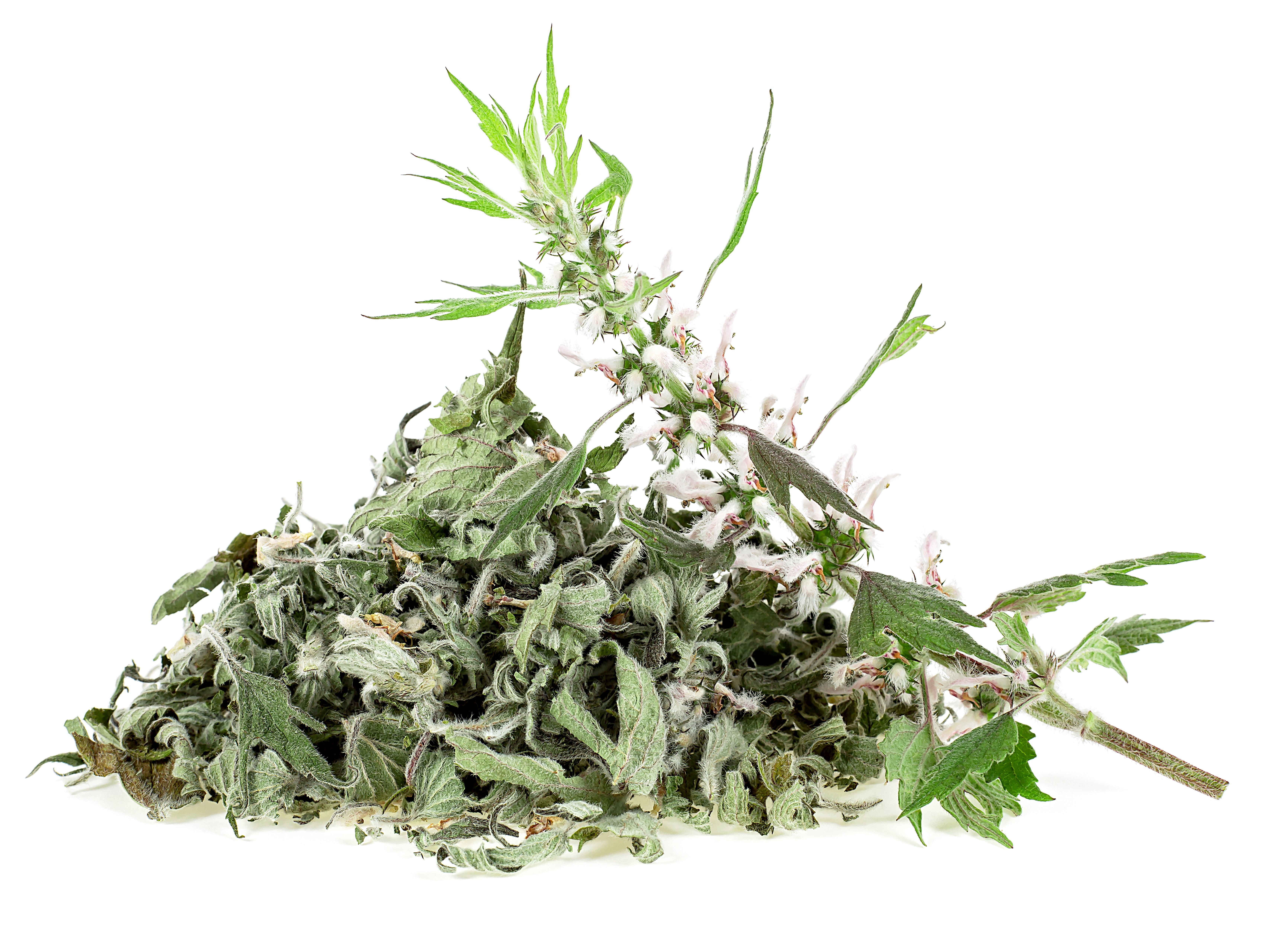Unveiling the Antioxidant and Antibiofilm Potential of Leonurus cardiaca Extracts Through Advanced Analytical Techniques
Researchers from Italy, Spain, and Turkey employed online high performance liquid chromatography (HPLC) to analyze various extracts of Leonurus cardiaca, revealing potent antioxidant properties and promising antibiofilm activity.
In a collaborative effort across Italy, Spain, and Turkey, a team of researchers explored the analytical landscape of Leonurus cardiaca, or common motherwort, extracts, shedding light on their antioxidant capabilities and antibiofilm potential. The study, published in the Journal of Separation Science, delves into the detailed analysis of methanolic, ethyl acetate, dichloromethane, hexane, and water extractions from L. cardiaca.
Pile of dried motherwort plant and fresh branch of motherwort isolated on a white background. Herbal medicine - Leonurus Cardiaca. | Image Credit: © domnitsky

The research team, whose affiliations include Selcuk University in Konya, Turkey, D'Annunzio University of Chieti–Pescara in Chieti, Italy, Istanbul Medipol University in Turkey, the Institute of Food Science (CNR-ISA) in Avellino, Italy, the Food Sciences Research Institute (CSIC-UAM) in Madrid, Spain, and Marmara University in Istanbul, Turkey, employed online high performance liquid chromatography (HPLC) methodologies to unravel the chemical composition and biological activities of these distinct extracts.
In the online-HPLC-antioxidant analysis, rosmarinic acid emerged as the predominant antioxidant across all samples, showcasing concentrations ranging from 6 to 15 ppm at wavelengths of 517 and 734 nm. Particularly noteworthy was the robust antioxidant activity observed in the water extract, suggesting potential therapeutic applications.
The study also examined acetylcholinesterase and butyrylcholinesterase inhibition, revealing that the n-hexane extract exhibited superior inhibition with values of 3.08 and 5.83 galanthamine equivalent, respectively. These findings hint at the potential neuroprotective effects of L. cardiaca extracts.
Of significant interest was the antibiofilm activity exhibited by the extracts. At a concentration of 20 μg/mL, all tested extracts except for water demonstrated substantial inhibitory activity against biofilm formation. In many cases, inhibition levels surpassed 80%, reaching an impressive 94.52% against Escherichia coli. The extracts also displayed efficacy against mature biofilms, with inhibition percentages reaching up to 76.50% against Staphylococcus aureus.
Furthermore, the extracts showcased their ability to combat the metabolism inside both immature and mature biofilms, with inhibition percentages reaching up to 93.18% against Pseudomonas aeruginosa and 76.50% against Acinetobacter baumannii.
The comprehensive analysis of L. cardiaca extracts highlights their multifaceted potential, combining significant antioxidants, enzyme inhibition, and antimicrobial activity. These findings position L. cardiaca as a promising candidate for therapeutic applications, offering a nuanced understanding of its potential in addressing oxidative stress, neurodegenerative conditions, and bacterial biofilm-related challenges.
This collaborative endeavor not only expands our knowledge of L. cardiaca but also underscores the importance of advanced analytical techniques, such as online HPLC, in unraveling the intricate interplay between botanical compounds and their biological effects. As the scientific community continues to explore the potential of natural extracts, studies like these pave the way for innovative applications in medicine and beyond.
This article was written with the help of artificial intelligence and has been edited to ensure accuracy and clarity. You can read more about our policy for using AI here.
Reference
(1) Nilofar; Eyupoglu, O. E.; Nazzaro, F.; et al. An Analytical Framework Combining Online High Performance Liquid Chromatography Methodologies and Biological Properties of Different Extracts of Leonurus cardiaca. J. Sep. Sci. 2023, e2300695. DOI: 10.1002/jssc.202300695
Investigating 3D-Printable Stationary Phases in Liquid Chromatography
May 7th 20253D printing technology has potential in chromatography, but a major challenge is developing materials with both high porosity and robust mechanical properties. Recently, scientists compared the separation performances of eight different 3D printable stationary phases.
Characterizing Polyamides Using Reversed-Phase Liquid Chromatography
May 5th 2025Polyamides can be difficult to characterize, despite their use in various aspects of everyday life. Vrije Universiteit Amsterdam researchers hoped to address this using a reversed-phase liquid chromatography (RPLC)-based approach.
New Method Explored for the Detection of CECs in Crops Irrigated with Contaminated Water
April 30th 2025This new study presents a validated QuEChERS–LC-MS/MS method for detecting eight persistent, mobile, and toxic substances in escarole, tomatoes, and tomato leaves irrigated with contaminated water.
University of Tasmania Researchers Explore Haloacetic Acid Determiniation in Water with capLC–MS
April 29th 2025Haloacetic acid detection has become important when analyzing drinking and swimming pool water. University of Tasmania researchers have begun applying capillary liquid chromatography as a means of detecting these substances.

.png&w=3840&q=75)

.png&w=3840&q=75)



.png&w=3840&q=75)



.png&w=3840&q=75)






